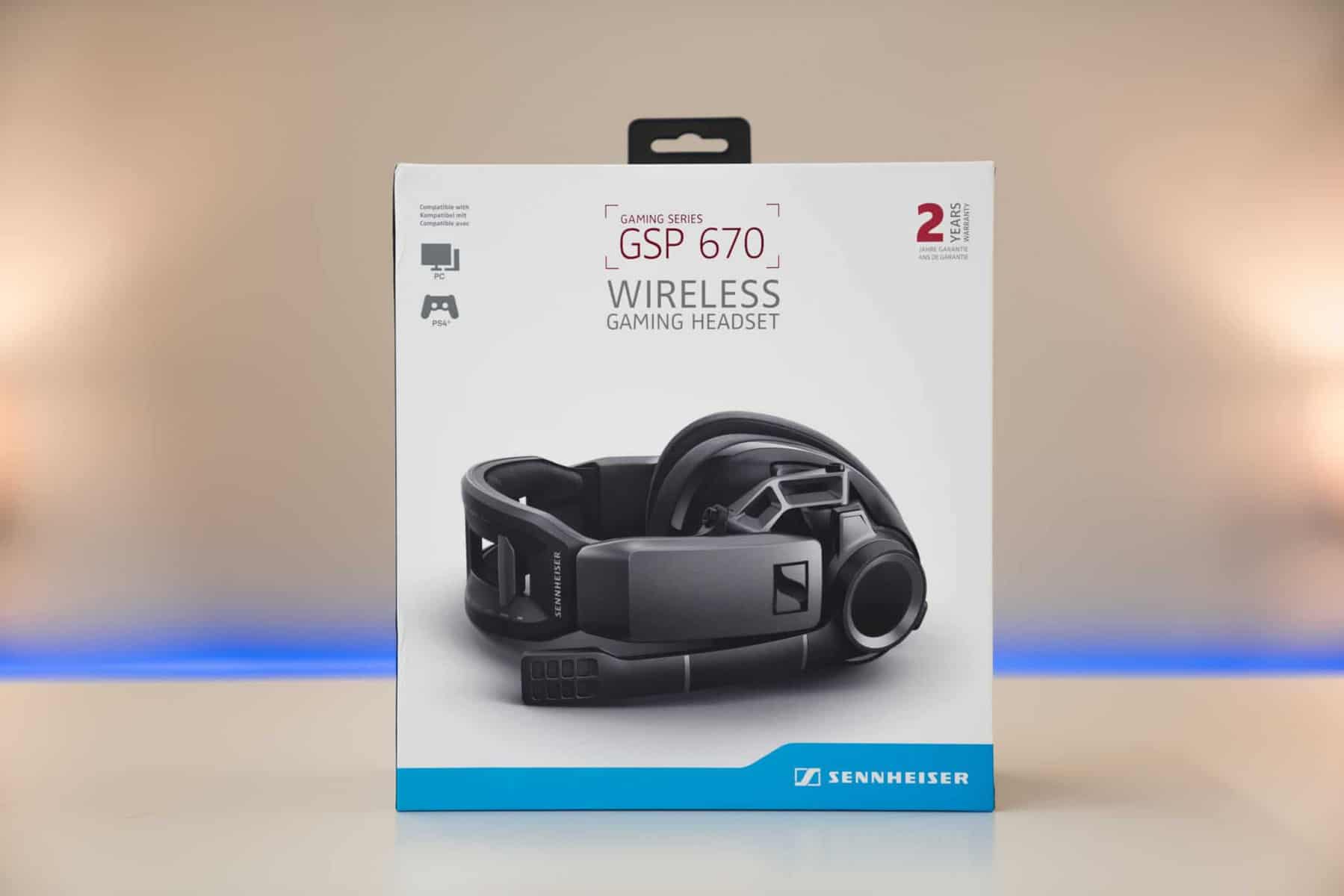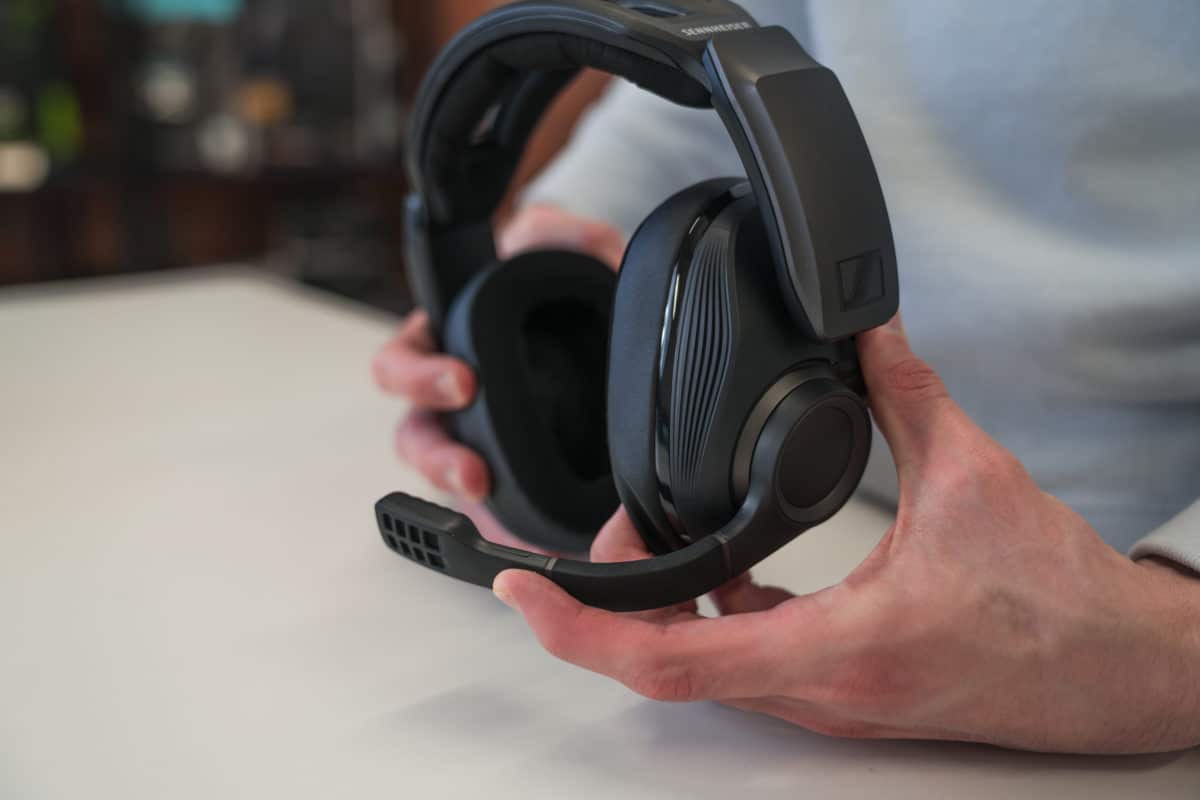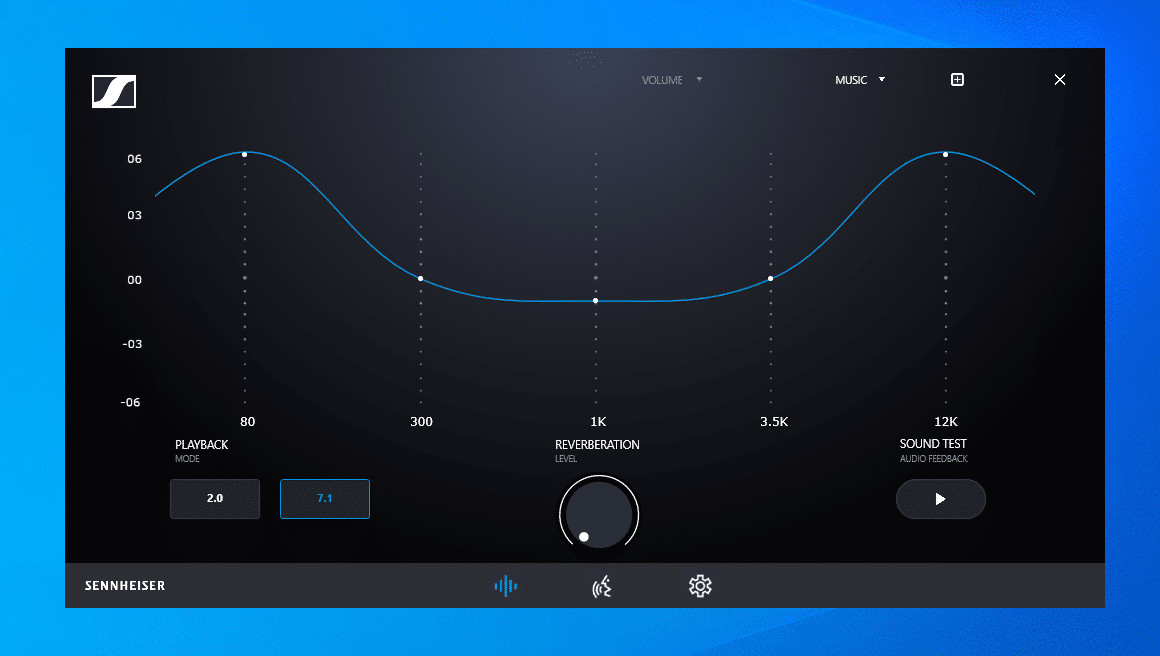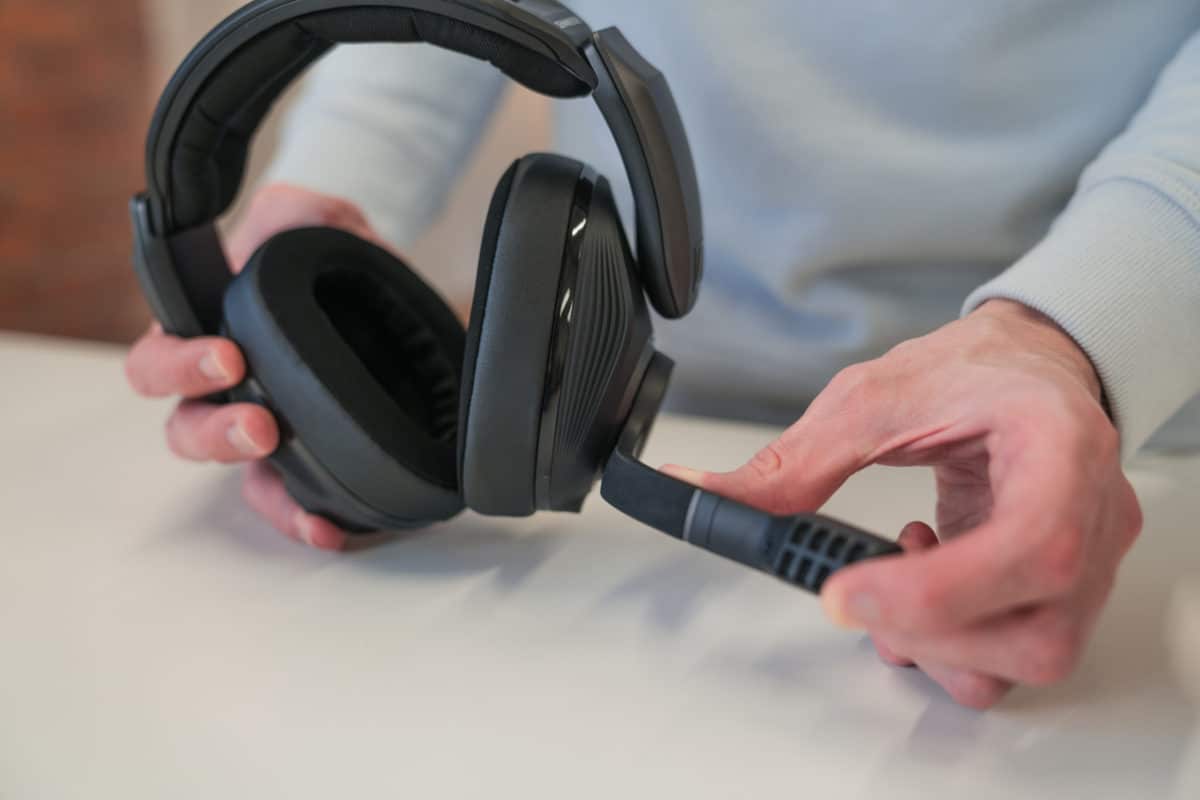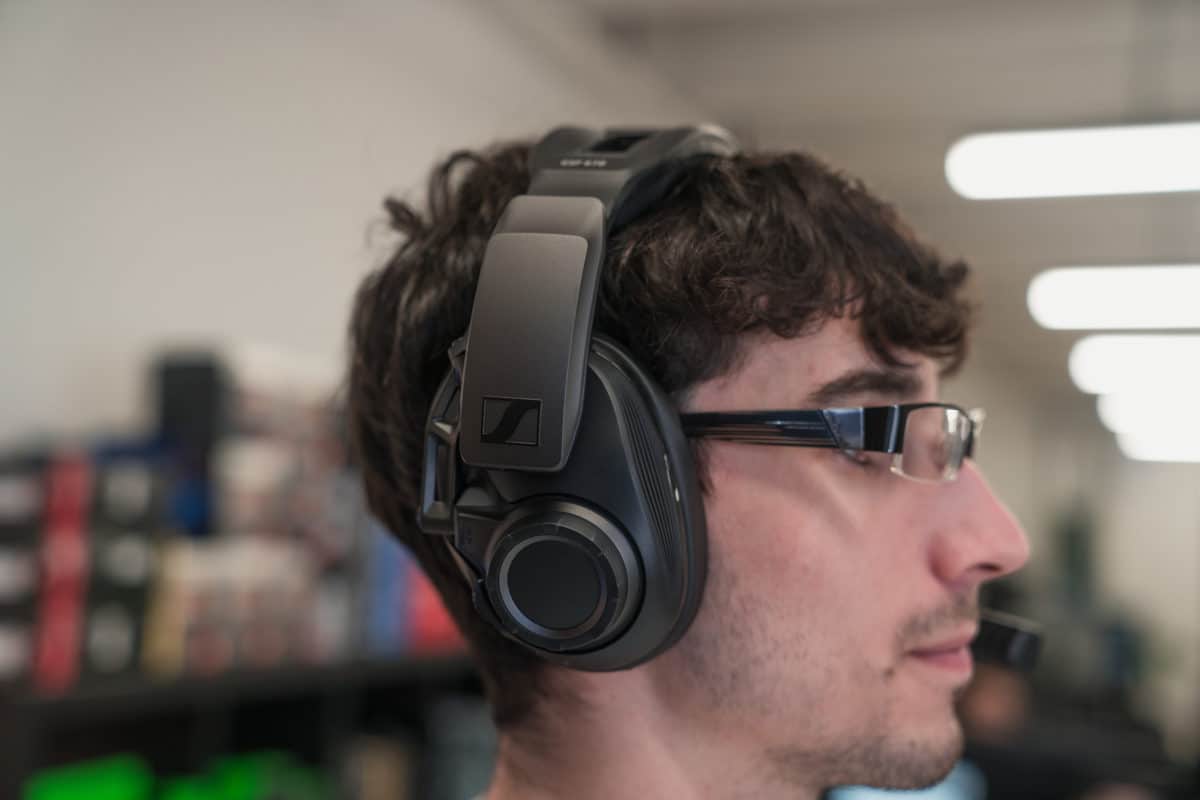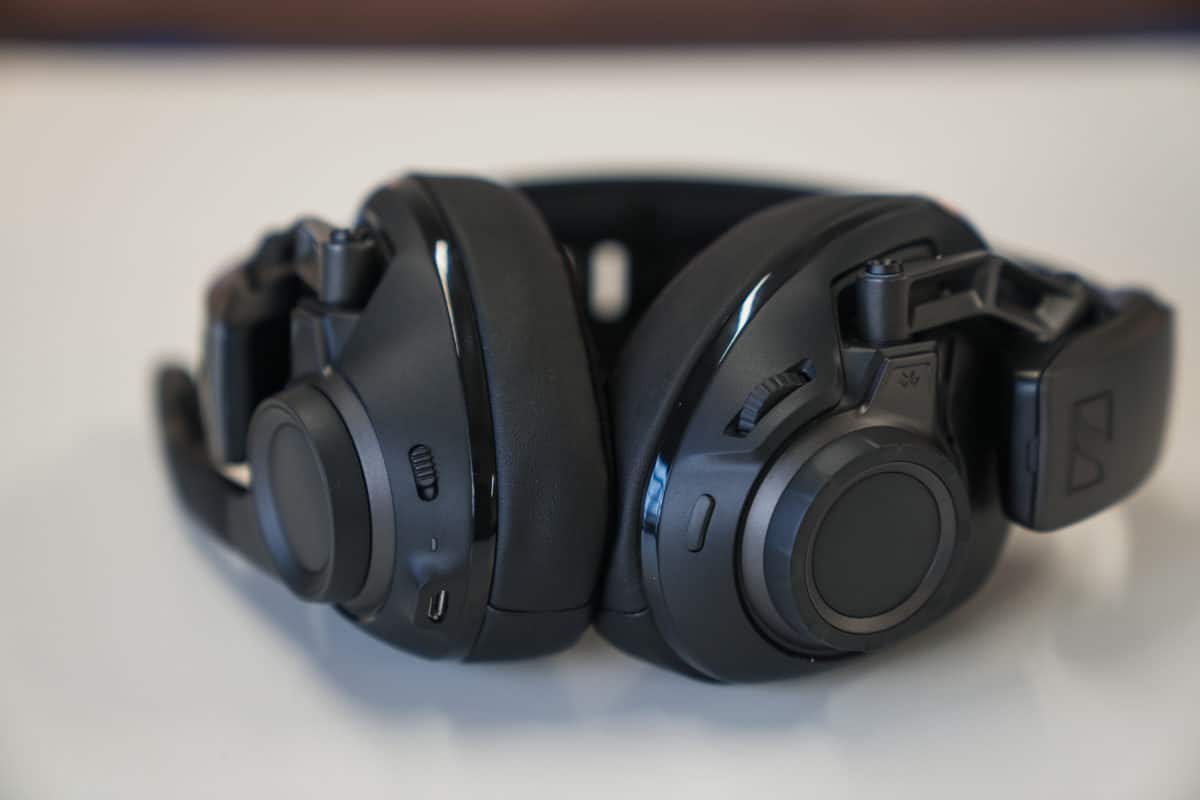After already getting to grips with Sennheiser’s more affordable gaming headset, the GSP 370s, we thought it was time to review the Sennheiser GSP 670s properly.
Initially, the GSP 670’s closed-back design might not seem that much different from the GSP 370s. However, the GSP 670 gaming headset is Sennheiser’s flagship gaming headset model.
This headset delivers audio via a wireless connection without losing that audiophile-level of sound quality Sennheiser lovers have come to expect.
Without further ado, let’s find out how this high-spec headset stacks up against the competition.
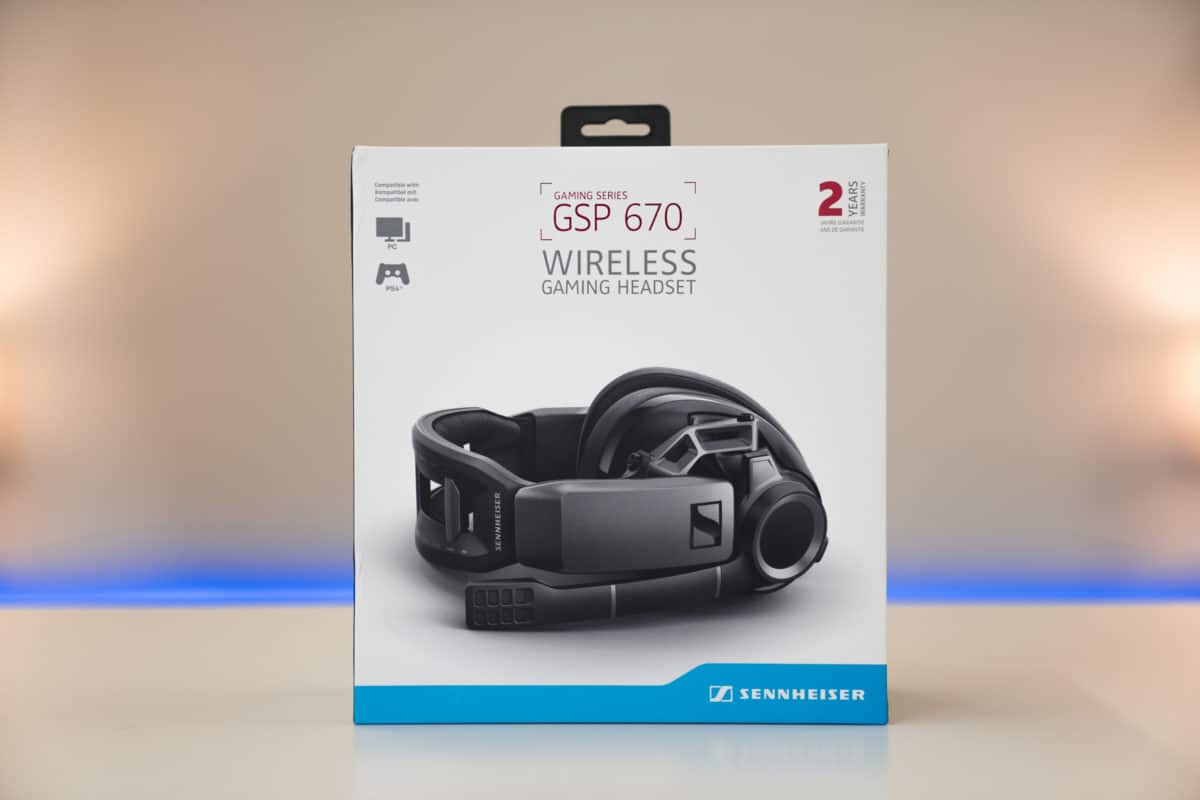
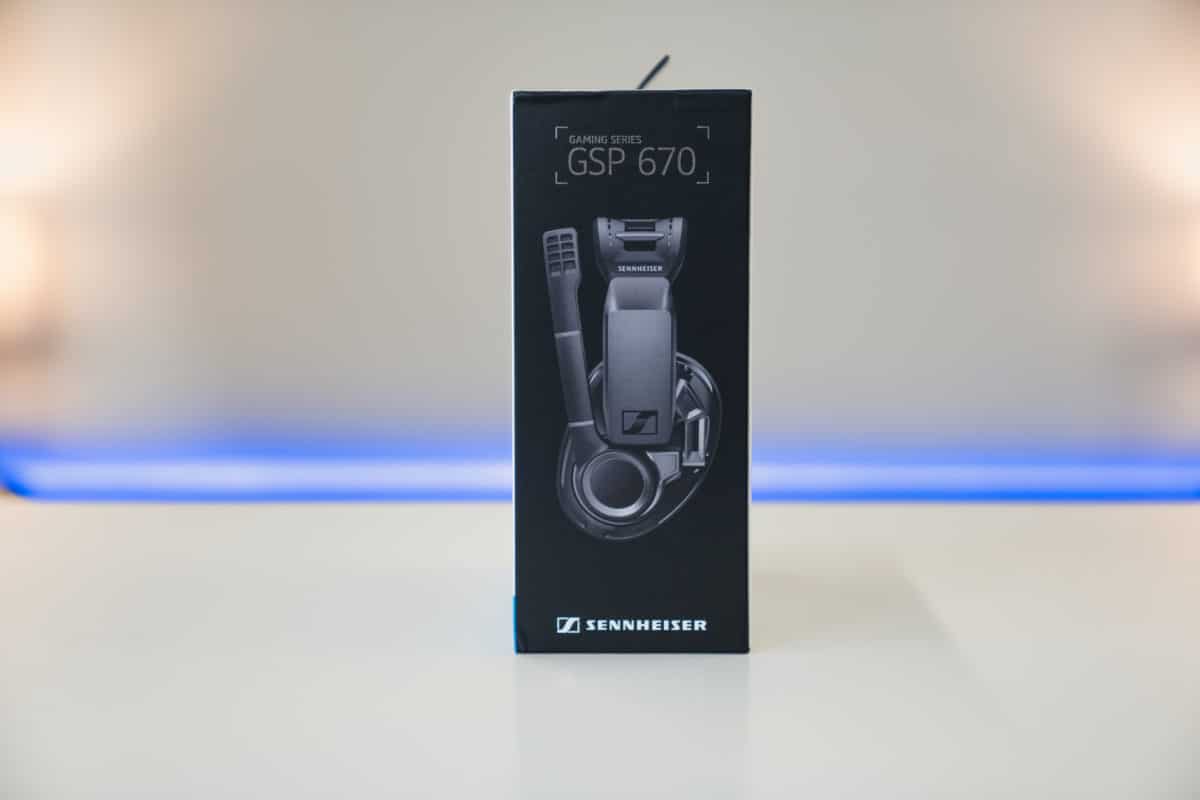
Specifications
Let’s take a quick glance at the specs for the premium GSP 670s, as you can quickly determine whether or not your needs are being met.
Inside the Sennheiser GSP 670 box, we see:
- GSP 670 Headset
- GSA 670 Wireless Dongle
- Micro USB Charging Cable
- Instructions
Setup
The setup of the Sennheiser GSP 670 gaming headset couldn’t be more straightforward, just plug in the USB dongle, and you’re away. You could leave it there, but after using the newer GSP 370s recently, it’s clear that this line of headsets benefit from a few EQ tweaks (depending on what you are listening to).
The headset connects wirelessly to the provided dongle and can be used with your PC / laptop or PS4. This is where we come across the first advantage that the GSP 670s have over the cheaper GSP 370s, the larger on/connect switch, which is easier to find and use while wearing the headset.
The on/connect switch has a double function (as you might have guessed). It will find and connect to the dongle after a two-second slide, and it can tell you the amount of power left with a quick flick. These actions are reflected visually with an LED indicator located near the switch to help you know whether the headset is searching for a device to connect to, checking its battery status, and whether or not it’s connected.
If you download the Sennheiser Gaming Suite software, you can tweak your preferences as much or as little as you like. The software will allow you to alter the EQ with presets or your own configurations.
While in the software, you can change the playback mode between 2.0 stereo (perfect for music) and 7.1 surround sound audio (ideal for gaming).
We also get an advanced microphone for gamers in this headset, so it isn’t surprising to see some customization options for that in the software too.
While some might not think of using the Gaming Suite, we heartily recommend it; it comes with plenty of presets for you to get a better audio experience depending on your personal preferences.
Design
The first thing you notice about the GSP 670s design is the bulkiness of the headset itself. Paired with the gunmetal grey plastic (which goes brilliantly with the dark velvet and black earcups), the GSP 670s make for an attractive looking gaming headset.
It’s good to see Sennheiser moving away from the loud spots of red we saw on the older GSP 600s, and the GSP 670 is a much more stylish pair as a result. Let’s not forget, this is Sennheiser’s premium gaming headset, and while you can definitely feel it, there is little to differentiate it from the cheaper GSP 370s aside from the weight.
Build Quality
Right away, when you are pulling these out of the box, you notice the Sennheiser quality. Weight aside, the mixture of the resilient plastic shell and the plush fabric gives the headset a luxurious feel. The outer casing to the earcups is solid, with zero give in the shell.
The mic screams build quality, and that’s good because it really is a prominent feature on this headset with a handy, rubberized middle section. The mic doesn’t really need to be adjusted, but it’s a pleasant option to have, and the swivel is smooth and very satisfying.
Overall the build quality just about surpasses the GSP 370s – but not by much. This might be more down to the overall quality you can expect with Sennheiser products though rather than anything else.
Comfort
I remember complaining a little when I first tried the GSP 370s on, saying the clamp was a little too tight for my big head. I can safely say after using the heavier 670s: I take it back. The GSP 670s not only feel incredibly heavy (398 grams), but the tight clamp on these becomes more and more noticeable the longer you have them on.
Don’t get me wrong; these are comfortable, and the plush cups we see really cushion your ears, but the clamp was not for my head shape. What was frustrating was the fact the GSP 670s feature a clamp adjustment option, making you think these are going to be supremely comfortable. Still, the adjustment barely made any noticeable difference.
Beneath the velvety earcups, sits some brilliantly placed memory foam, which really sinks into your ears and luckily improves the comfort ten-fold. The outer layer covering the memory foam is more of a suede-like material that feels incredibly soft, yet is much easier to clean than suede. 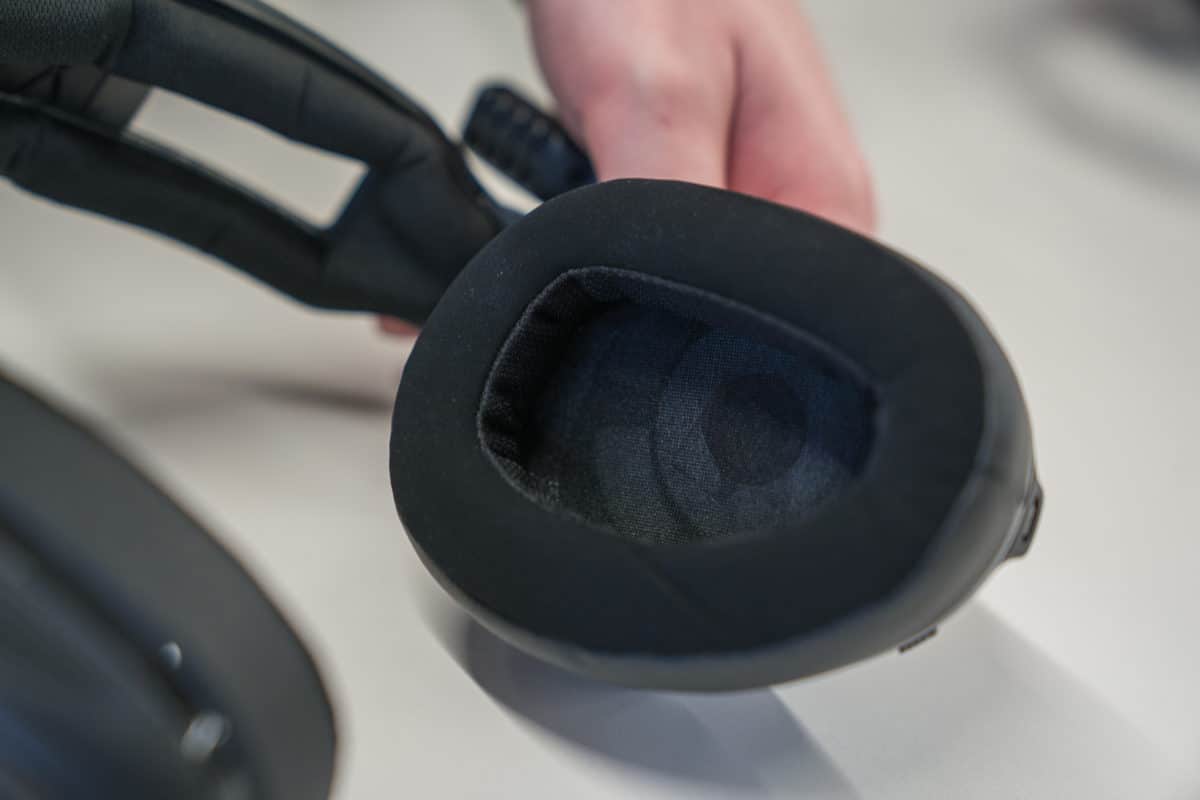
The GSP 670s feature a lot more adjustment options than the cheaper GSP 370s. On the headband, there are two sliders that will change the level of the clamp to accommodate different head sizes. For me, the clamp was already too tight, and when adjusted, I barely noticed any difference while wearing the headset. These provide a, let’s say snug fit, and the earcups come with a few extra design points to assist in making this a comfortable headset.
The GSP 370s had a small amount of movement in the earcups – but it wasn’t really noticeable. The GSP 670s, however, feature a small hinged arm that will allow its earcups to move up and down / left and right, again catering for different head sizes and shapes.
Despite all these adjustment options, though, the headset became uncomfortable after around two hours of usage, with my head beginning to get itchy. The GSP 670s do come with a gap in the headband to allow for airflow to your scalp and reduce the amount of sweating/ itching your head would normally do. Despite this feature, though, my head would still itch, which inevitably means these are just not built for my head. 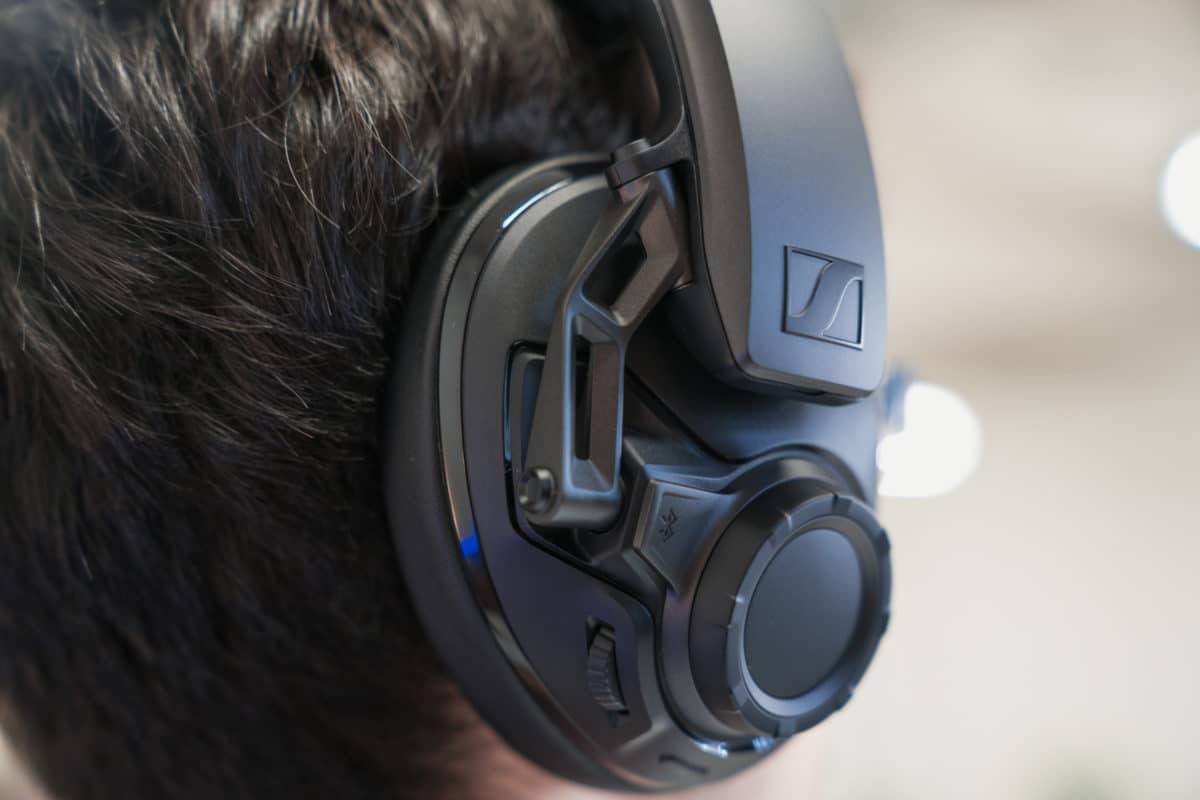
Performance
The quality of sound was superb; these really changed my gaming experience for the better.
Now the difference between these and the cheaper GSP 370s is negligible, but noticeable, depending on what you are listening too. The bass and low notes come through a lot clearer on the 670s, for example.
Of course, the range is bigger on the GSP 670s – they are the more expensive headset, and they sound great regardless of what you are playing…but I’m not sure where that extra cost is going. Now obviously you couldn’t master a track with this pair, but for general entertainment and gaming, the performance was definitely impressive.
Sound
Solely from an audio point of view, I have never had a better experience in gaming. There is a level of detail and spark to this headset that inevitably comes from the fantastic drivers. You could argue that the sound quality isn’t that different when compared to its predecessor, as the same neodymium drivers feature in the GSP 670s and again, no complaints here, they are great.
My standard CS:GO gaming routine has gone out the window as of late, with Squad slowly taking its place. The sound design in Squad is excellent, and if you are a lover of FPS shooters, then there is no better way to immerse yourself into battle than with the Sennheiser GSP 670 gaming headset.
The headset provided a really powerful output at full volume, with unbelievable detail with no noticeable clipping. All the normal bullet whistles and bomb explosions again were enhanced, immersing me into the game even further.
The standout difference (albeit a small one) from the GSP 370s was when listening to audio down at the lower end. The GSP 670s feature a range of 10-23,000 Hz frequency response, which provided even better highs than the GSP 370s and sublime lows. Speaking of the lower end, the clarity of the bass from mortar fire in the distance gave off a very realistic thud, and the clarity of tank fire in the distance was a real treat for the ears.
When you download the Sennheiser Gaming Suite software, the headset is capable of virtual 7.1 surround sound. This enhanced the sound for movies and television but, most of all, for positional cues while in-game.
I would be lying if I said I did not extensively test these on CS: GO because I’m slightly addicted. The first thing to note while playing competitively was the accuracy of enemy positions. While you could argue there was little in this respect to differentiate these from the GSP 370s, the edge I gained from the audio alone was a breath of fresh air.
Microphone
The boom mic that features on the GSP 670s is a bi-directional electret condenser microphone that Sennheiser says is of broadcast quality. Now the first thing anyone who streams or records will notice is that this microphone is nowhere near the level of broadcast quality people expect today – but that isn’t to say it’s necessarily bad.
The noise-canceling mic works wonders in-game with it offering a certain amount of crispness to my voice. The noise-canceling worked a charm, with no complaints from teammates in Discord (and that’s with push-to-talk off).

The microphone cannot be detached, which is fine considering this is a gaming headset, but you couldn’t really use these for the daily commute. Other than that, we see the swivel to mute function we see across a few of their headsets, and once again, it’s a fantastic feature that I personally enjoy.
Features
The Sennheiser GSP 670 gaming headset is the manufacturer’s premium offering, so there are some interesting features to this that we haven’t seen on the cheaper 370s or the Gaming One’s. Let’s take a closer look to see what this headset offers other than high-quality sound.
Battery Life
With a full charge, the GSP 670s get about 16 hours of operation, which is fine, but compared to the cheaper model, it isn’t much. This figure increases when you use the Bluetooth connectivity by up to 20 hours – and after testing, these numbers appear to be true.
Connectivity
The Bluetooth 5 technology that features in this headset is an interesting one. On the one hand, it gives you greater flexibility with what devices you can connect to, but on the other hand, does a gaming headset need this? On a positive note, it worked well and would connect to a Bluetooth device without fail – but I did find myself thinking that a switch to change between the dongle and Bluetooth would have been handy.
When listening to music off my smartphone, all would be well. However, if my PC played any audio at all, the connection would break, and it would change back to the USB dongle. This isn’t exactly a major issue as you probably wouldn’t be listening to two things on two different devices at once, but it’s a small gripe.
Programmable Button
This button is essentially the same as a DPI switch on your mouse, it can be programmed to change the audio settings and yet again saves you from tabbing out. It wasn’t a feature I really found too useful, but there was an instance where I had joined a game and still had the EQ set up for music, so this just made my overall experience much more pleasant as I didn’t have to fiddle around.
Our Verdict

It is fair to say that this headset wasn’t right for my head shape, and I had a feeling that would be the case after using the cheaper GSP 370s. That being said, they remained comfortable for around two hours before I needed a small break.
These are unquestionably one of Sennheisers best gaming headsets to date, but with a high price, bulky frame, and slight heaviness, my vote is staying with the battery life champion – The GSP 370s.

